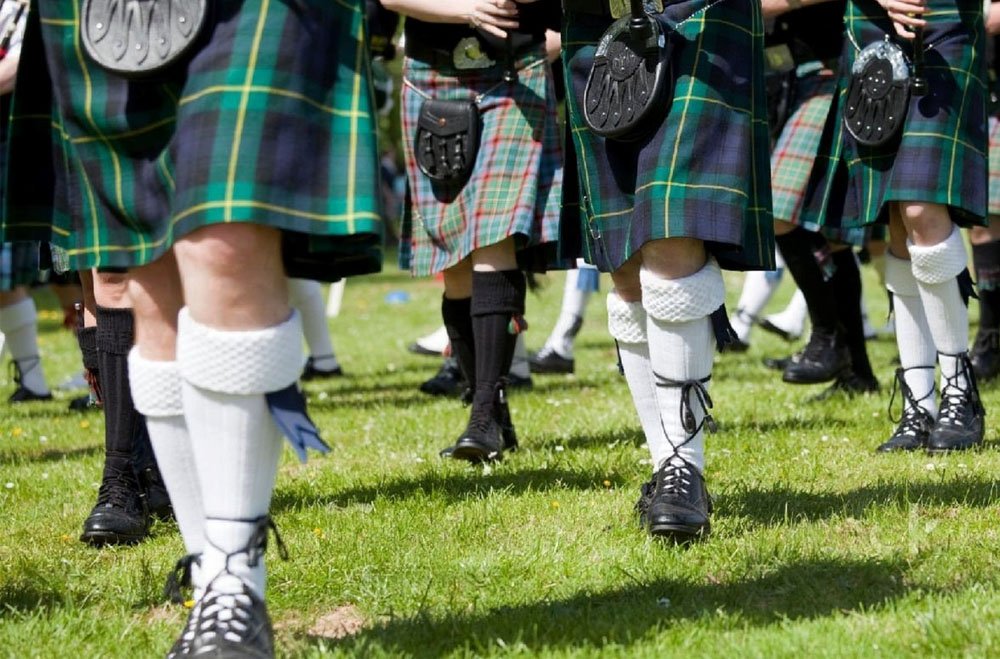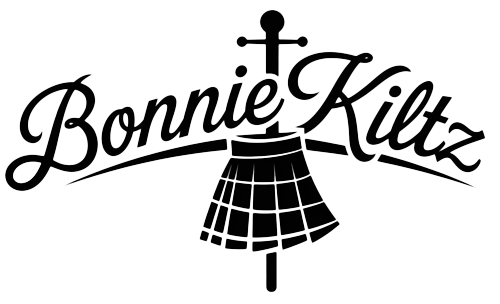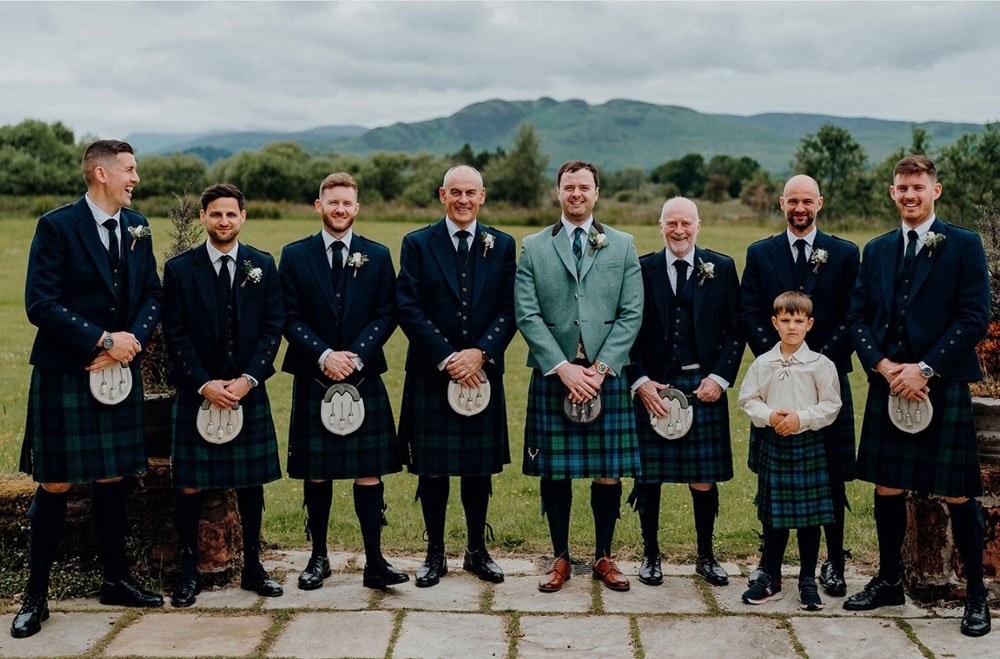The kilt, an iconic garment synonymous with Scottish culture, is more than just a piece of clothing; it is a powerful symbol of heritage, pride, and identity. With its distinctive pleats and tartan patterns, the kilt has transcended its functional origins to become a significant part of Scottish tradition. This blog delves into the historical, cultural, and practical reasons why Scottish men wear kilts, exploring their significance both in the past and present.
Historical Origins of the Kilt
Early Beginnings
The history of the kilt dates back centuries, evolving from ancient garments worn by the Celts. The earliest version of the kilt, known as the féileadh-mór, was a long piece of woolen fabric that was draped around the body. This garment was practical for the Highlanders, providing warmth and protection against the harsh Scottish climate. Over time, the féileadh-mór evolved into the modern kilt we recognize today. By the 16th century, the kilt had become an essential part of Highland dress, favored for its functionality in the rugged landscape. It allowed for ease of movement, making it suitable for outdoor activities such as hunting and farming.
The Influence of Clan Identity
The kilt is deeply intertwined with Scottish clan identity. Each clan has its own unique tartan pattern, which serves as a visual representation of its history and heritage. Tartan was originally used in the Highlands to signify clan affiliation, and it remains an important aspect of Scottish culture today. The distinctive patterns often reflect the geographical regions of the clans, and wearing a kilt in a specific tartan can evoke a sense of belonging and pride in one’s lineage. During clan gatherings and events, the kilt serves as a unifying symbol, showcasing the rich tapestry of Scottish heritage.

The Cultural Significance of the Kilt
Symbol of Scottish Heritage
The kilt stands as a powerful emblem of Scottish heritage and national pride. Its history is steeped in the struggles and triumphs of the Scottish people, particularly during the Jacobite uprisings. The kilt was worn by Highlanders fighting for their clans and traditions, making it a symbol of resistance and resilience. Even today, the kilt is worn with great reverence during national celebrations, such as Burns Night and St. Andrew’s Day, where it embodies the spirit of Scotland. By wearing a kilt, men not only honor their ancestors but also contribute to the ongoing preservation of their culture.
Kilts in Ceremonial and Formal Occasions
Kilts are often worn during significant life events, such as weddings, graduations, and formal gatherings. In these contexts, the kilt serves as a mark of respect for Scottish traditions and customs. For weddings, grooms often don a kilt to signify their connection to their heritage, while guests may also choose to wear kilts to celebrate the union of two families. At Highland games and cultural festivals, participants wear kilts to showcase their pride in their Scottish roots and compete in traditional events. The kilt’s presence at these occasions underscores its role as a symbol of celebration and cultural identity.
Practicality and Functionality of the Kilt
Designed for the Scottish Landscape
One of the most significant advantages of wearing a kilt is its practicality. Designed for the rugged Scottish terrain, kilts are made from durable, breathable fabrics that offer comfort and freedom of movement. The pleats in the back allow for ease of motion, making them ideal for outdoor activities, such as hiking and farming. Historically, Highlanders wore kilts as they navigated the challenging landscapes of the Highlands, and their design has proven to be functional in both traditional and modern contexts. The kilt’s open structure allows for air circulation, making it a practical choice for the unpredictable weather conditions common in Scotland.
Modern Adaptations
In recent years, kilts have adapted to meet contemporary needs and preferences. While traditional kilts are often made from wool, modern kilts come in various materials, including cotton and synthetic fabrics, which are lighter and easier to care for. Utility kilts, designed for everyday wear, feature pockets and loops for carrying tools, making them practical for work and casual outings. This versatility has broadened the appeal of kilts, allowing them to be worn by a wider audience, both in Scotland and globally. Today, kilts are not just reserved for special occasions; they have become a fashionable choice for men looking to blend tradition with modernity.

Modern Interpretations of the Kilt
Kilts in Contemporary Fashion
Kilts have made a significant mark on contemporary fashion, with designers and influencers embracing the garment in new and innovative ways. While traditional kilts remain popular, modern interpretations often incorporate bold colors, unique patterns, and contemporary cuts. Fashion shows and cultural events have showcased kilts as a stylish option for men, breaking away from the notion that they are exclusively traditional wear. Today, kilts can be found in various styles, from casual and sporty to formal and chic, allowing individuals to express their personal style while honoring their Scottish roots.
Kilts Beyond Scotland
The appeal of the kilt extends far beyond the borders of Scotland. As Scottish communities and diaspora spread across the globe, the kilt has become a symbol of Scottish heritage embraced by many, regardless of their nationality. Festivals celebrating Scottish culture, such as Highland games, take place worldwide, where people proudly wear kilts to connect with their heritage. This global appreciation of the kilt reflects its significance as a cultural symbol and its ability to bring people together, fostering a sense of community and shared identity.
Misconceptions About Kilts
Do All Scottish Men Wear Kilts?
One common misconception about kilts is that all Scottish men wear them regularly. While kilts are an important part of Scottish culture, they are typically reserved for special occasions such as weddings, formal events, and cultural celebrations. The everyday attire for many Scottish men may include trousers or casual clothing, with kilts being worn primarily during significant life events or when attending cultural gatherings. Understanding this distinction helps to appreciate the kilt’s role as a ceremonial garment rather than everyday wear.

The Debate Around Wearing Kilts Without Scottish Heritage
The conversation around who can wear kilts has sparked debate over cultural appropriation versus appreciation. Some people argue that wearing a kilt without Scottish heritage may disrespect its cultural significance. However, many believe that anyone can respectfully wear a kilt as long as they acknowledge its origins and the traditions associated with it. The key is to approach the garment with respect and understanding, recognizing its place in Scottish culture while celebrating its versatility and appeal to a broader audience.
Conclusion: The Timeless Appeal of the Kilt
The reasons why Scottish men wear kilts are deeply rooted in history, culture, and practicality. From their ancient origins as practical garments for Highlanders to their status as symbols of Scottish identity today, kilts embody the spirit of Scotland. They are worn with pride during significant life events and cultural celebrations, serving as a testament to the resilience and rich heritage of the Scottish people. As kilts continue to evolve, they remain a timeless symbol of pride and identity, connecting generations through tradition and style.

